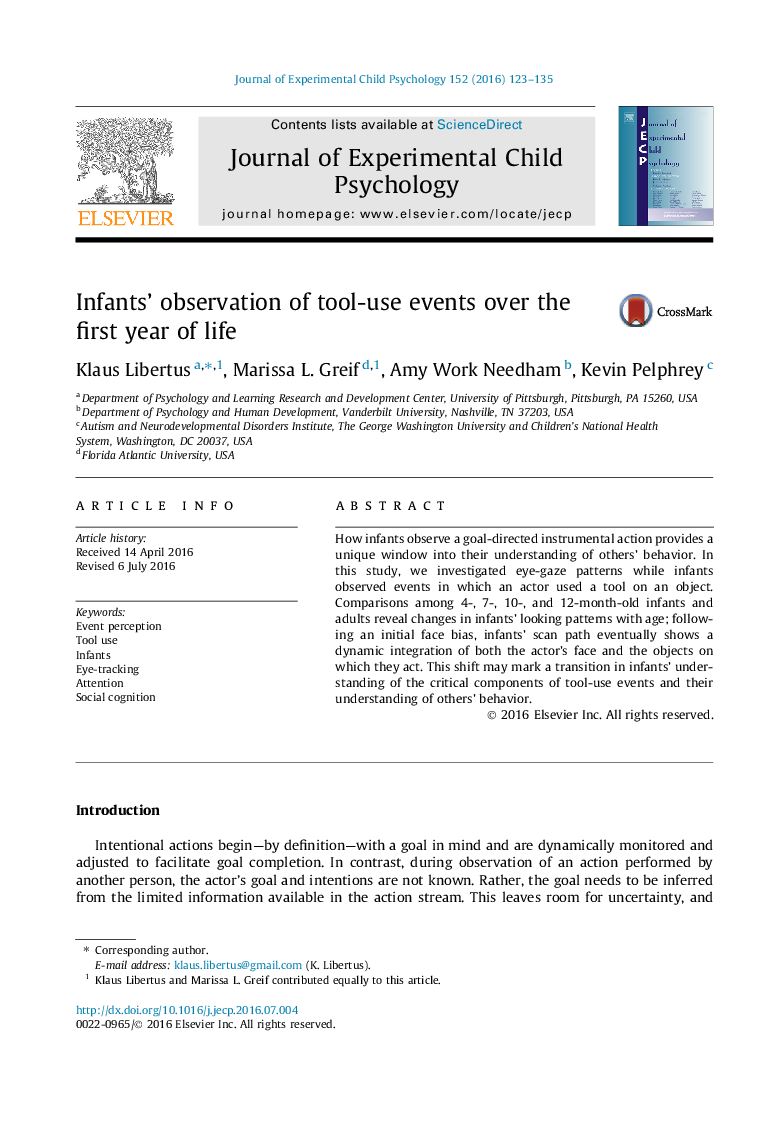| Article ID | Journal | Published Year | Pages | File Type |
|---|---|---|---|---|
| 917851 | Journal of Experimental Child Psychology | 2016 | 13 Pages |
•Infants’ and adults’ eye gaze were recorded observing naturalistic tool-use events.•Infants’ looking patterns shift as they grow older.•A key developmental transition occurs around 7 to 10 months of age.•Identification of critical components within tool-use events becomes more efficient.
How infants observe a goal-directed instrumental action provides a unique window into their understanding of others’ behavior. In this study, we investigated eye-gaze patterns while infants observed events in which an actor used a tool on an object. Comparisons among 4-, 7-, 10-, and 12-month-old infants and adults reveal changes in infants’ looking patterns with age; following an initial face bias, infants’ scan path eventually shows a dynamic integration of both the actor’s face and the objects on which they act. This shift may mark a transition in infants’ understanding of the critical components of tool-use events and their understanding of others’ behavior.
